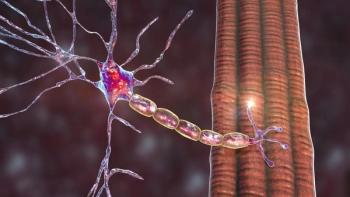
Gene therapy for choroideremia may be on horizon
Gene therapy to treat choroideremia is one step closer to reality thanks to a new study.
Alberta, Canada-Gene therapy to treat choroideremia is one step closer to reality thanks to a new study.
“Choroideremia is a devastating condition for individuals and families, but we believe our new gene therapy will arrest any further deterioration of vision and will provide long lasting benefit,” said Ian MacDonald, MD, CM, principal investigator of the new phase II clinical trial, which is sponsored by the Faculty of Medicine and Dentistry of the University of Alberta, Canada
Dr. MacDonald expressed his excitement at being involved in the project and said he had already treated his first patient.
Additionally, the biopharmaceutical company NightstaRx Ltd (Nightstar) has developed a highly promising new gene therapy product for this rare disorder.
The product has been granted orphan drug designation in both the United States and Europe.
David Fellows, chief executive officer of Nightstar, explained that the company- which specialises in therapies for retinal dystrophies-is “broadening (its) pipeline of products in development and . . . leading the way in the development of an effective gene therapy treatment for choroideremia.”
Gene therapy for choroideremia
Because the genetics of choroideremia are well understood, it has long been considered a suitable target for gene therapy, in particular because almost all known cases involve functionally null mutations to the relevant gene.
These mutations result in a severe loss or absence of the endogenous protein, which means that the protein produced by the therapeutic gene does not have to compete with an existing large pool of defective protein.
The therapy involves an injection of adeno-associated viral (AAV) vector that delivers a wild-type copy of the Rab escort protein 1 (REP-1) gene into the cells of the eye to replace the faulty gene. AAV2 was chosen as the specific vector for various reasons, most importantly of which being that it had already been shown to be safe and effective for use in the retina, in ocular gene therapy trials for Leber’s congenital amaurosis type 2.
Previous trial results
The results of the first clinical trial of AAV2-REP1 surpassed all expectations.
The trial was designed to test whether the gene therapy could be injected into the retina without causing damage but, as reported in The Lancet in 2014, the first six patients all showed subjective improvement in their vision in dim light and two of the six were able to read more lines on the Snellen chart. One patient has been followed now for 2 years and his initial vision improvements have been maintained.
The effects of treatment were real and life-changing: one trial subject commented that he had seen the stars for the first time in many years, while another described the change as being “as though someone has switched on the floodlights.”
Results are awaited from a further three patients who were enrolled to receive a higher dose of AAV2-REP1.
New phase II trial
The new open-label phase II trial will give a single sub-retinal injection of 0.1 mL AAV2-REP1 to one eye only in six men. Safety will be assessed as the primary outcome, with changes in visual field and function as secondary outcomes.
The initial follow-up period will be 2 years, with further annual follow-up for at least 10 years to test the long-lasting benefit of the therapy.
Data will continue to be analysed even after the study is complete.
Newsletter
Stay at the forefront of cutting-edge science with CGT—your direct line to expert insights, breakthrough data, and real-time coverage of the latest advancements in cell and gene therapy.













































